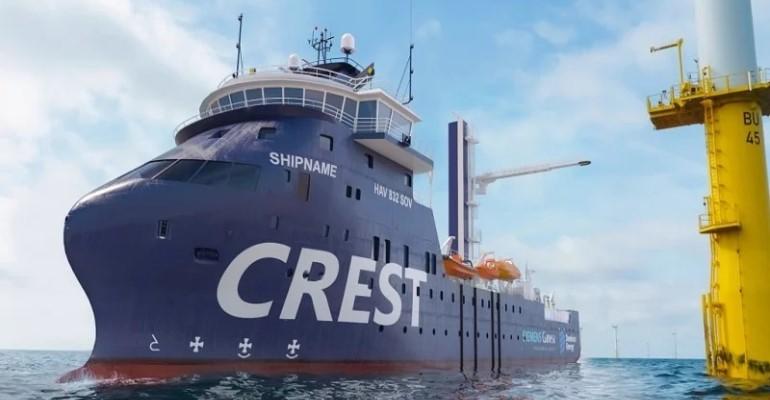This realism in US offshore wind and vessel financing issues featured in the Clean Energy in a Changing World themed conference produced jointly by the Hellenic American and Norwegian American Chambers of Commerce, known as the HACC NACC event.
On a panel, moderated by George Tsimis, a maritime lawyer with extensive experience in maritime insurance and claims resolution, panelist Charlie Papavizas, Partner at law firm Winston Strawn, talked about the good news - various projects still underway, and the bad news - cancellations of two high profile projects off the coast of New Jersey by Ørsted, and a similar cancellation, in the “New York Bight”, by Equinor/ BP.
Fellow panel member Alexandra Tebaldi, from MacAllister Towing, citing a recent conversion with an industry trade group, said, “The expectation is that we will reach half of our goal by 2030- 14.5 gW”. She said “The goal stays alive, but we have to find a way forward from here,” adding that two large projects (backed by Invenergy and TotalEnergies) were recently approved by New Jersey regulators. “It’s not all bad,” she said.
For the vessel sector, the discontinuity between lengths of employment contracts - short term, maybe one or two years, versus financing arrangements - typically requiring payouts over seven to 10 years, is a real problem. Papavizas, in response to a question on problems surrounding equipment finance, said: “Most of the vessels have to be built on spec” and added that: “you are not getting term contracts, except for Service Operation Vessels (SOVs). For SOVs McAllister’s Tebaldi pegged at costs of circa $180 million, with substantial recent increases), and Papavizas said they, “They might get a 10 year contract”.
Talking about crew transfer vessels with costs of $10 - $12 million, “which might get 12 months, maybe renewable for another 12”. In other cases a rock dumping vessel employed on Empire 1 and a Wind Turbine Installation Vessel (WTIV) under construction, which will be employed offshore Virginia by developer Dominion Energy in its Coastal Virginia Offshore Wind project, he said once their initial projects are completed, there is no employment booked.
He said: “The vessels are basically having to be built on balance sheet,” meaning that the financing is not dependent on full payout from a lengthy charter. In a follow-up, Tebaldi said, “The biggest hurdle that we face is access to financing….with the uncertainty in the market, it makes lenders very nervous.”
Veteran banker Martin Lunder, from Green Harbour Advisor, on HACC NACCs finance panel, which touched on lending for the wind sector, told the audience: “We can’t really get [borrowers] the money that they want because the contracts don’t justify the amount of money…they have to take a residual risk…they can’t repay the loan with the contracts that are in place…at the end of the contract, you still have a significant loan.”
On the same panel, Paul Leand, from AMA Capital Partners, suggested that, besides bank lenders, Private Equity (PE) financiers were taking a look at the offshore wind sector, alluding to their need to invest in projects tied to the “E” in ESG (environmental benefits). In the Offshore panel, Papavisas pointed out that, in financing Jones Act compliant vessel, requisite for working in nearly all aspects of the US projects, Federal government backing plays a key role.
Support for offshore wind will require continued funding but the money movers in Capitol Hill are very distracted. At present, the legislative branch (Senate and House of Representatives) is presently in the midst of intense partisan battling over bills concerning border security and aid to foreign nations engaged in ongoing wars.
A September 2023 report from the Congressional Research Service (CRS) noted that: “In June 2022, [US Maritime Administration, or MARAD] announced that vessels supporting offshore wind energy production would receive priority consideration. Congress could increase the total amount of loan guarantees available by appropriating funds to the programme.
Recent applications for Title XI loan guarantees include the builder of the rock installation vessel at $216 million, purchasers of three of the SOVs under construction of between $90 million and $146 million for each vessel, and a builder of 10 CTVs for $104 million.” The Title XI program provides Federal guarantees on debt, enabling attractive interest rates and lengthy terms.
Reader resource: Congressional Research Service report on “Vessel Construction for Offshore Wind Power Generation” https://crsreports.congress.gov/product/pdf/IF/IF12491
Copyright © 2024. All rights reserved. Seatrade, a trading name of Informa Markets (UK) Limited.
Add Seatrade Maritime News to your Google News feed.  |

